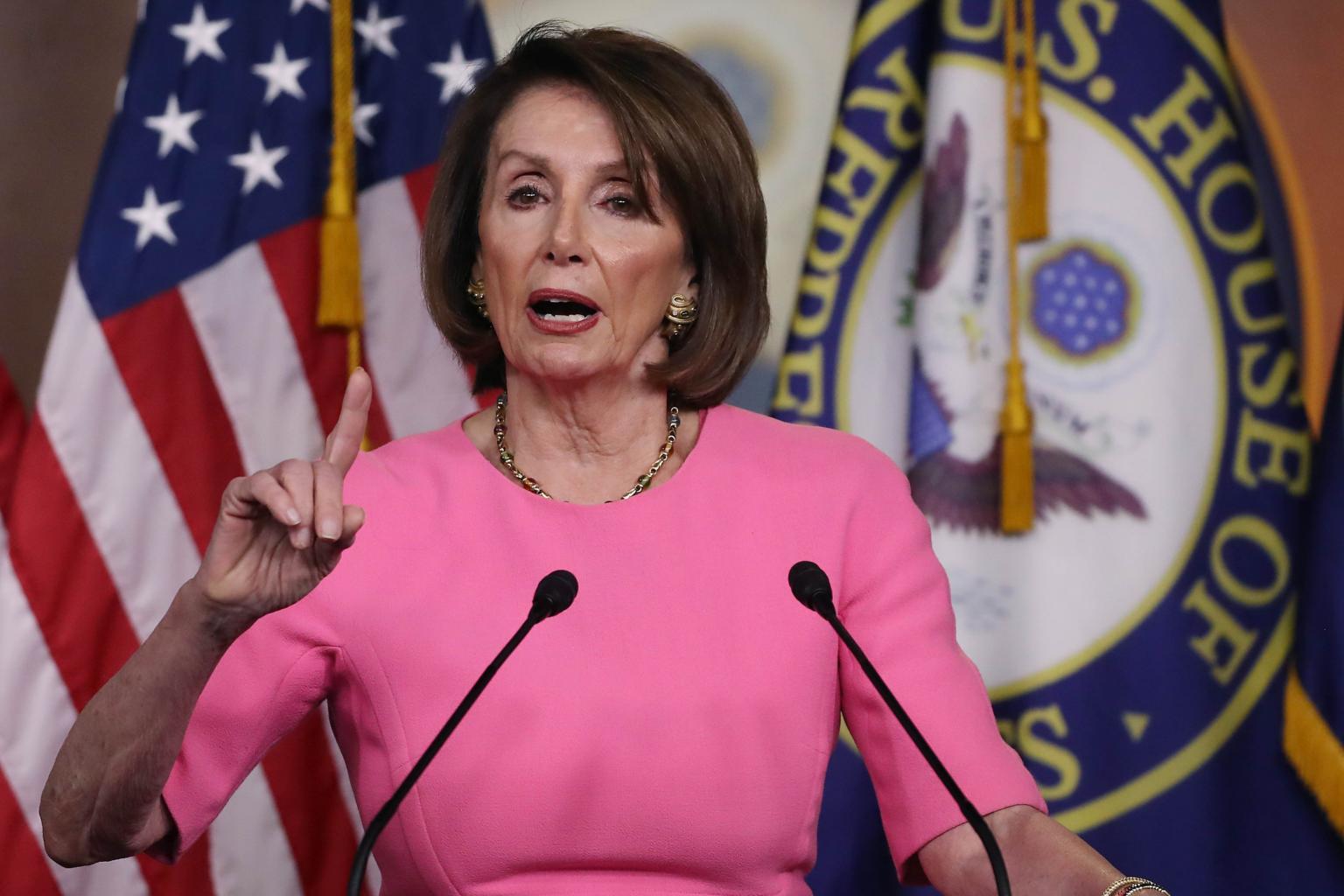Distorted videos of Nancy Pelosi spread on Facebook and Twitter, helped by Trump
Sign up now: Get ST's newsletters delivered to your inbox

One of the videos, which showed Speaker Nancy Pelosi speaking at a conference appeared to be slowed down to make her speech sound continually garbled.
PHOTO: AFP
Follow topic:
WASHINGTON (NYTIMES) - Manipulated videos of Speaker Nancy Pelosi that made it seem as if she were stumbling over and slurring her words continued to spread across social media on Friday (May 24), fueled by President Donald Trump's feud with the Democratic leader.
One of the videos, which showed Pelosi speaking at a conference this week, appeared to be slowed down to make her speech sound continually garbled.
The video has been viewed millions of times on Facebook and was amplified by the president's personal lawyer, Rudy Giuliani, who shared the video on Thursday night on Twitter.
"What is wrong with Nancy Pelosi?" Giuliani said in a tweet that has since been deleted. "Her speech pattern is bizarre."
Trump himself tweeted a separate video of Pelosi on Thursday night, an edited clip from Fox Business that spliced together moments from a 20-minute news conference and emphasised points where she had stumbled on her words.
"PELOSI STAMMERS THROUGH NEWS CONFERENCE," the president tweeted.
By Friday, the social media giants, already under pressure to fight online disinformation, were forced to respond.
Addressing the distorted video that made Pelosi's speech sound slurred, YouTube said the video violated its standards and had been removed.
Facebook said that a third-party fact checker had rated the video "false", but posts remained on the site and the company said it was trying to limit how widely the video was shared.
That video continued to be shared and viewed on Twitter, but the company declined to comment.
The videos surfaced online amid a particularly intense and public feud between Trump and Pelosi.
Each questioned the other's temperament and mental fitness in an exchange of personal insults on Thursday, as Pelosi works to stave off impeachment proceedings that she believes could harm her party and as Trump continues to defy Democratic efforts to subpoena documents and summon witnesses in the wake of the release of the special counsel's report last month.
But the videos also raised broader concerns about the roles of digital manipulation and disinformation in politics, particularly in the lead-up to the 2020 election.
Tech giants have been grappling with how to combat disinformation, after Russian interference during the 2016 presidential election became a template for spreading false information online.
And recent episodes have underscored how videos and other information can make their way from the corners of the internet to the mantel of national politics.
Trump has previously used doctored, if obviously cartoonish, videos for political purposes, including ones targeting former Vice-President Joe Biden, a Democratic candidate for president, and CNN, the cable news network.
In another case, his administration relied on a misleadingly edited video from a contributor to the conspiracy site Infowars to help justify removing the credentials of CNN's chief White House correspondent.
In another instance, Democratic tech experts mimicked Russian tactics to help Senator Doug Jones of Alabama edge out his Republican opponent, Roy S. Moore, including creating a Facebook page where they posed as conservatives to divide Republicans and endorse a write-in candidate to draw votes away from Moore.
The origin of the footage that changed Pelosi's speech was not clear. In a video posted by C-SPAN, she can be seen speaking at normal speed at a conference for the Center for American Progress.
Siwei Lyu, a professor of computer science at the State University of New York at Albany, said the video boosted low frequencies in the audio, while preserving Pelosi's words and appearance, making it especially effective at creating a false impression.
"It's very subtle," he said. "I think that is actually one of the most dangerous parts of disinformation and fake media."
The edited version was shared widely on Facebook and elsewhere, prompting many to question whether Pelosi had been drinking or had been otherwise under the influence.
An aide to Pelosi described the attacks as sexist and said the speaker does not drink.
Her supporters also raised concerns about the timing of the president's own tweet sharing the spliced Fox Business video, which came as the video distorting her speech was making the rounds online.
On Friday, Giuliani said that he did not know the video was altered when he shared it on Twitter. "I didn't know it was doctored," he said. "I had no reason to believe it at the time. It looked like enough of an extension of the way she communicates anyway."
"It did seem a little exaggerated and I think I tweeted, 'What's wrong?'" he added.
"But to overreact is a little hypocritical given she is the one who was making very, very direct comments about the competence of the president of the United States of America, which I don't think any good American should do."
Giuliani said that he took the tweet down after someone texted him calling the video into question. He said he had not seen the original footage.
"Where do you go to check that it's inaccurate?" he said. "How could I have figured out that it was inaccurate?"
Lyu, who has studied deepfakes, a kind of ultrarealistic fake video made with artificial intelligence software, said that many false videos can be detected if people slow down, watch again and think critically.
"There is no way back; the Pandora's box is opened," he said.
But he added: "We are all part of the ecosystem, consuming and also generating information, so we must do our part of the job to make the ecosystem healthy."

